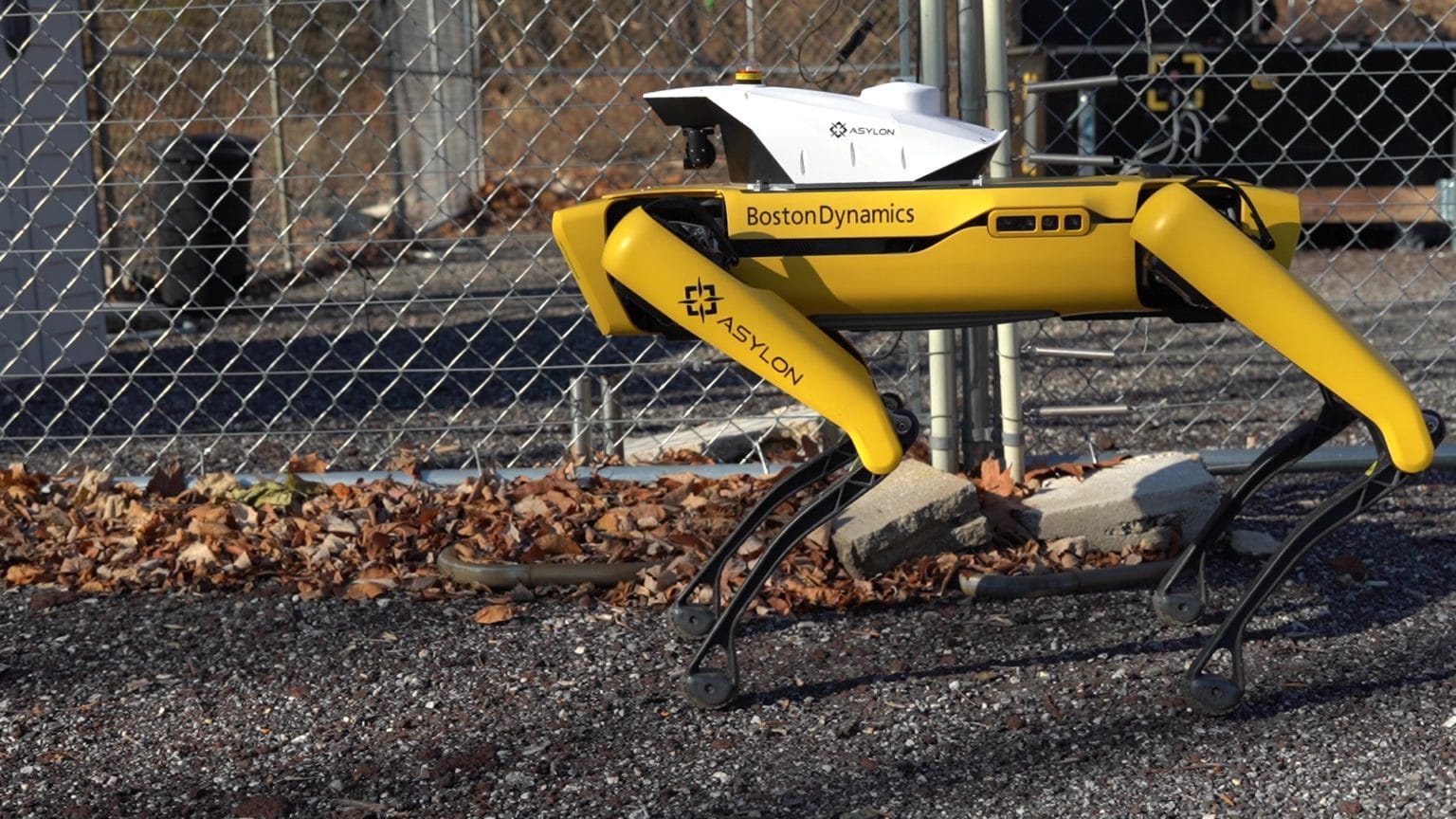ISJ Exclusive: How are new technologies automating physical security?


James Thorpe
Share this content
Damon Henry, CEO and Co-Founder, Asylon describes how emerging security technologies are finding new ways to keep enterprise sites and employees safe.
These past few years have reshaped how we’re thinking about the workplace. While many business functions were sent to work from home due to the pandemic, the assets of the workplace — the sites, inventory, distribution centers — still had to be protected – and protected with personnel on-site.
Estimates show that this was a time of criminal opportunity and non-residential, commercial thefts rose by almost 38%. For one of the first times in recent history, physical security, a department typically considered just a necessary cost centre, became a board-level discussion across the country.
To make matters even more difficult, with the new surge in inflation and overall labour shortages, it’s getting harder to protect commercial sites and keep employees safe. These are the exact conditions under which new emerging technology can thrive. Enterprises are (hopefully) willing to break from the norm to explore new ways to keep their people, property and assets safe.
Security robotics and the automation trend
The great news in all of this is that robotic technology continues to advance. Despite the COVID-19 pandemic, there was over $1.2B of investments into emerging robotic technology companies in December 2021 alone.
Robotics are used across all industries right now for the three D’s: The dull, the dirty and the dangerous. While most robotic platforms have been built for indoor environments, like for warehouses and industrial manufacturing, they now also exist for outdoor physical security.
Physical security has been ripe for the implementation of both aerial and ground-based robotics. A ground-based robot can be set to automatically patrol fence lines or critical areas, looking for anomalies. It can’t get hurt, won’t doze, and is expendable in a dangerous situation. Some security robots like DroneDog can even climb stairs and navigate uneven terrain.
Additionally, an aerial security asset, like a drone, can instantly augment CCTV cameras and provide real time video of anywhere at a site. It can also quickly traverse large sites in the event of an emergency, providing valuable intelligence to the local security team.
With powerful cameras that can zoom and see in the day or night, the visual impact that both aerial and ground-based robotics can provide is immense. By bringing in robotics to perform defined missions or complete repetitive tasks, you free up the existing physical guard presence to do what humans do best: Think and respond.
In my opinion, this is the most interesting part. What we’re seeing isn’t just technological. There’s actually an operational and cultural shift taking place right now. With dull, repetitive patrolling functions automated, personnel can be employed in new, innovative ways with plenty of upskilling opportunities. It’s this kind of shift that is, given the current global climate, vital to maintaining a healthy and competitive security workforce.
As an example of innovation in the security sector, GXO Logistics recently announced they are scaling their security robotics program to include DroneDog and DroneSentry systems. “The DroneDog and DroneSentry advanced security system is an example of how we’re leveraging technology to boost our 24/7 security presence and protect our people and our customer’s products,” said Thomas Nelson, Senior Director of Security at GXO.
“GXO is committed to innovating in all areas of our business, and the integration of advanced technologies is a vital part of our strategy to improve safety, security, efficiency, sustainability and resilience.”
Leveraging emerging tech for guarding operations
Technologies are improving across all industries within the security sector. For example, over the last few years there has been technological progress in the world of AI/ML analytics, access control systems, advanced sensors, physical barriers and more. Innovations with many of these technologies are part of a new overall trend to an automated and layered approach to physical security.
While the approach, at its core, ultimately requires fewer manual inputs, it is sure to loop in humans at key points for decision-making. One area that a human needs to be looped in is around false alarms of legacy systems or of new sensors and analytics.
We’ve found that drones and robots are exceptionally helpful tools in investigating and clearing these third party systems automatically. Over the last few years, our customers have cleared over 5,000 false alarms with robotic assets, saving hours of their security teams’ time.
While clearing false alarms falls into the “dull” category, having solutions available to support the “dangerous” missions is equally important. A specific use-case where emerging technologies are hyper relevant is around the detection and response to active shooter incidents. AI/ML analytics, like that from ZeroEyes, can be integrated onto existing CCTV cameras for automatic gun detection. A positive identification can instantly notify the appropriate personnel to a dangerous situation while a drone or robot can further assess the situation.
These aerial or ground-based devices can respond and perhaps even distract the shooter. And, they are infinitely more expendable than a human life. At this point, you now have an automated response system that can actively provide real-time intelligence in a developing situation or even potentially delay an immediate threat in the moments where every second counts.
All of this falls into the general trend we’re seeing toward automation. With staffing shortages, reduced budget and higher commercial crime rates, automation architecture is the most effective path to building a comprehensive, modern system.
Key considerations for architecting new technology programs
It may seem basic, but an important distinction to remember about these types of new technologies is that there are platforms and then there are individual technologies that contribute to those platforms. When implementing a new technology program, you need to understand where exactly the pieces you’re evaluating fit together within the overall technical and operational architecture.
When considering the program architecture side, ask yourself some of these questions: Is this a stand-alone technology or does it interact with other systems? What legacy systems are available to work with a new technology? What are the shortcomings of some of the legacy systems? And what kinds of technologies can be used as an effective gap filler? Is this platform capable of ingesting legacy system alarms? What kind of data is of most interest to track and/or actively respond to? What does the long term path look like?
From a technology perspective, platforms are the most difficult to build, but provide the most value to customers. This is because they’re, by nature, complex systems. However, they are then capable of effectively collaborating with a variety of different types of systems and sensors.
Building a physical security automation platform
For the first time, physical security leaders can immediately tap resources that enable automated patrolling and alarm response through the use of connected systems and robotics. As companies look to increase capabilities and reduce costs across the board, this kind of automation and upskilling is critical. And, with an effective implementation strategy, new technologies like those discussed bring a much needed enhancement to an existing security posture.
At Asylon, our mission is to enable our clients with the most advanced automation technologies on the planet and provide a customer experience that is second to none. From the hardware infrastructure for leveraging drones and robots to the development of platform-based software and third party integrations, we specialise in end-to-end physical security automation systems.
To learn more or to request a security robotics demo, visit our website: www.asylonrobotics.com

This article was originally published in the July edition of International Security Journal. To read your FREE digital copy, click here.



